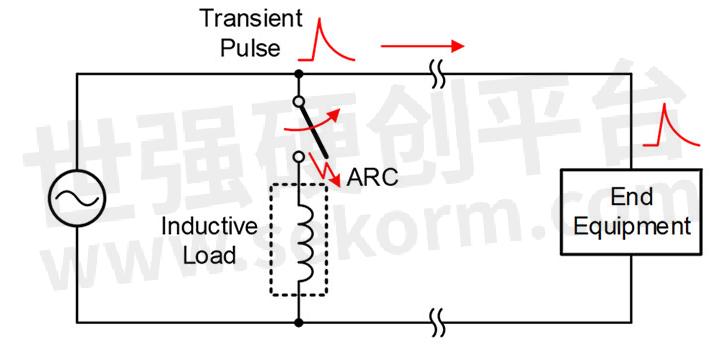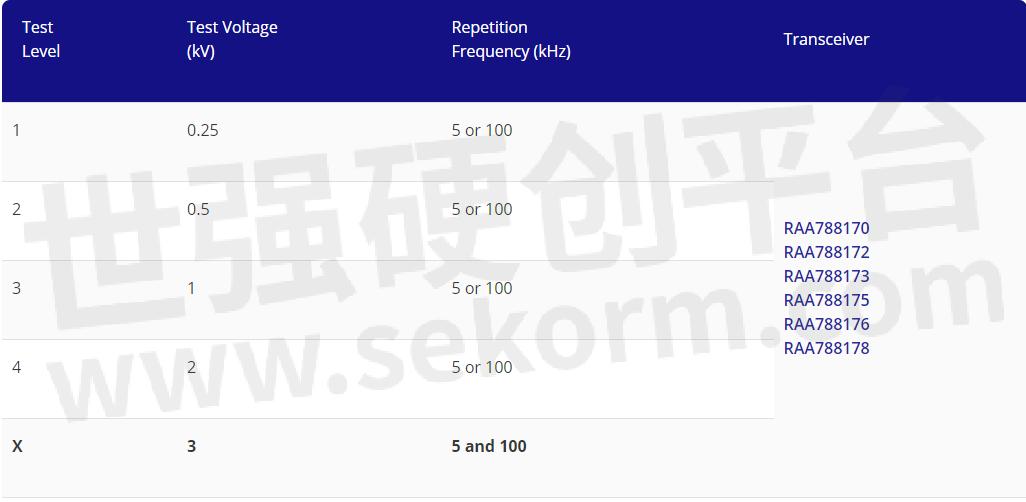Prevent Expensive Downtime with the Industry’s Highest EFT Immunity 3.3V RS-485/RS-422 Transceivers

Author Tom Kugelstadt, Principal Applications Engineer from Renesas--Industrial networks using RS-485 transceivers can be subject to electrical fast transient (EFT) bombardment on a daily basis. These transients, typically occurring in the form of bursts, originate from switching transients due to the interruption (switching) of inductive loads, relay contact bounce, etc.
The presence of these transients can corrupt the data between transmitting bus nodes and even damage transceiver devices, resulting in network downtime. Device internal transient suppression circuits are therefore necessary to ensure a fast recovery from EFT events to maintain network operation.
EFT Origin
When de-energized, inductive loads such as relays, switch contactors, or heavy-duty motors produce bursts of narrow high-frequency transients on the power distribution system. These fast transients can also be produced when the utility provider switches in or out of the power factor correction equipment.
A common cause of power line transients is sparking that occurs whenever an AC power cord is plugged in, equipment is switched off, or when circuit breakers are opened or closed.

Figure 1. Generation and Coupling of Transient Noise into an End Equipment
RAA78817x RS-485 Transceivers Offer 3kV Immunity to EFTs
To assess a system’s immunity to EFT bursts, the International Electrotechnical Commission (IEC) developed the IEC 61000-4-4 standard that defines the test voltage waveform, range of test levels, test equipment, test set-up, and test procedure.
For complete details on the test setup for Renesas’ RAA78817x family of RS-485 transceivers, please refer to the Renesas "R15AN0012: EFT Immunity for the RAA78817x Family of 3.3V RS-485/RS-422 Transceivers" application note.
The RAA78817x transceivers were tested with up to 3kV EFT transients. Before and after an EFT test, the bus and receiver output signals of the transmitting and the receiving nodes were observed for visual comparison.
In addition to the visual confirmation of normal transceiver operation, all transceivers were tested on an Automatic Test System (ATE) for parametric performance. The pass criterion required that a device did not show any parametric shift.
The results showed that the RAA78817x family of 3.3V RS-485/RS-422 transceivers passed all EFT tests with the 3kV test voltage, which places this transceiver family into the highest special test level category of IEC 61000-4-4 (Figure 2).

Figure 2. EFT Test Level Category for RAA78817x Transceivers
For harsh environments and industrial networks where RS-485 transceivers can be subject to electrical fast transient (EFT) bombardment regularly, Renesas’ high EFT immunity transceivers are the best option.
- +1 Like
- Add to Favorites
Recommend
- Renesas’ RAA78817x Family of RS-485 Transceivers has 3kV Immunity to Electrical Fast Transients (EFT)
- Renesas DSP Solution on Renesas Lab on the Cloud, Input Analog Signals Directly From A Signal Generator To The Rx231 Microcontroller Evaluation Board
- Renesas‘ Semiconductor Manufacturing Factory (Naka Factory) Fire: Production Capacity Has Recovered to 88%
- Renesas Announces 10 New Winning Combinations Integrating Celeno and Renesas Products
- Renesas & Altran to Deploy First Social Distancing Wristwatch Using Ultra-Wideband Chipset with Low Rate Pulse
- Renesas and FAW Establish Joint Laboratory to Accelerate Development of Next-Generation Smart Vehicles
- Renesas Semiconductor Manufacturing Factory (Naka Factory)‘ Production Level Has Returned to 100%
- Renesas and Sequans Expand Their 5G Collaboration including Broadband IoT Module for 5G NR FR1/FR2
This document is provided by Sekorm Platform for VIP exclusive service. The copyright is owned by Sekorm. Without authorization, any medias, websites or individual are not allowed to reprint. When authorizing the reprint, the link of www.sekorm.com must be indicated.





























































































































































































































































































































































































































































































































































































































































































































































































































































































